The Natural History Museum of Zimbabwe in partnership with the Dambari Wildlife Trust has embarked on their second project with JRS which seeks to conduct fieldwork in the Somabhula grassland (Debshan and Jabulani) in the Shangani area and to digitize Zimbabwean arachnids and herpetological records from Mozambique and Zimbabwe that are housed in the National Collection of the Natural History Museum of Zimbabwe. The team has hit the ground running and provided a robust field report from Project Co-director, Dr. Moira Fitzpatrick, below.
++++++++++++++++++++++++++++++++++++++++++++++++++++++++++++++++++++++++++++++++++++++++++++++
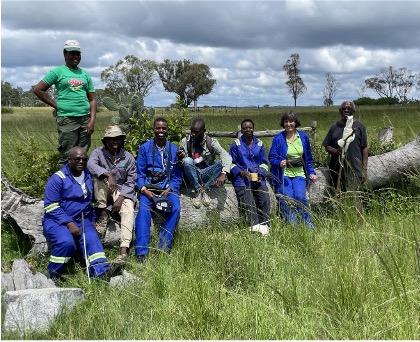
The first biodiversity survey for the hot wet season was carried out by the Natural History Museum of Zimbabwe, Bulawayo staff and students from the National University of Science and Technology from 17-26 February 2025. Dr Moira FitzPatrick, Francis Nyathi, Sindiso Dube, Phephile Tshabanga (staff) and Admire Mundondi (student) made up the arachnid team while Shiela Broadley, Simbarashe Mafodya, Bernard Mupangapanga (staff) and Warren Jubane (student) made up the herpetology team. Mrs. Cathy Sharp was tasked with the vegetation survey and collecting plant samples from all sites sampled.
In February, Shangani, Zimbabwe the average temperatures are about 29°C during the day and 14°C at night. Rainfall is frequent at this time averaging about 205mm, so days can be cloudy, hot and humid. While in the field we experienced a few short rain showers, and only one morning was it too wet to do any collecting
Sandy and loamy soils exhibit varying fertility levels, with a high moisture content and numerous wet spongy areas. The vegetation is variable from short grasses with numerous herbs and sedges, to areas will taller thatching grass. Dominant grass species include Hyparrhenia sp, Themeda ariandra, Heteropogon contortus, Panicum maximum, Aristrida sp with a variety of herbaceous plants including Bidens Pilosa, Indigofera sp, Helichrysum sp, Chamaecrista sp and Senecio sp.
COLLECTION OF SPIDERS
Random sampling was done throughout the grasslands close to both Deshan Head Quarters and Jabulani Safaris, two sites were chosen in each area. Within these sampling sites various techniques were used to collect spiders.
Pitfall Traps Surface active Arachnids are easily collected in pitfall traps.

A series of containers were set into the ground so that the tops are at ground level, creating pitfall traps. These are useful as they measure the activity of ground-living species and give a good indication of what species are present. Ten small pitfalls (glass jam jars) were placed 3m apart along four transects in each sampling site and emptied daily and catches placed in 70% alcohol.
Sweep Net

A sweep net is widely used for collecting from grasses as it is a simple and quick method to sample active spiders and obtain a rough estimate of their numbers. Each sweep covers an arc of approximately 180 through the vegetation, and 100 sweeps evenly paced out were done along 4 transects in the morning and afternoon for two days in each of the four sites. The results of this compare the different species and abundances in each of the different grasslands. University of Zimbabwe student Admire Mundondi had never used a sweep net before and was shown how to use it for collecting spiders and will use his collections in his Bsc (Hons) University project.
Beating Tray
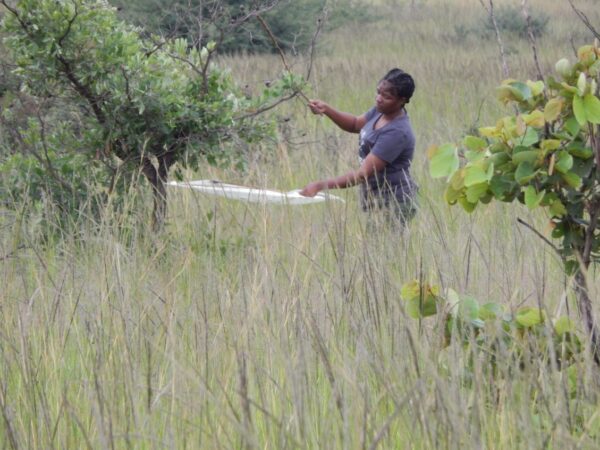
The beating tray (1 x 1m) is held under a section of the canopy which is then knocked with a stick to dislodge the spiders from the leaves and twigs. Two or three knocks are usually sufficient. Spiders that fall onto the tray are collected and is a simple and quick method to sample active invertebrates. Twenty trees/shrubs within each plot are collected from twice daily for two days in each of the sampling sites for comparison.
Active Searching and Night Collecting
Actively searching for spiders during the day and using torches at night enhances species detection as many spiders are cryptic and remain hidden during the day, requiring careful observation in leaf litter, under rocks, and on vegetation. At night, torchlight reveals eye-shine from nocturnal species, such as wolf spiders, that are otherwise difficult to spot.

Vegetation Surveys
In each sampling site the vegetation was sampled along a 100m transect recording the species present and also indicating the most abundant grasses, herbs and sedges. All plant specimens collected will be placed in the Natural History Museum, Zimbabwe herbarium. The species lists produced will be used in any future publications based on this field work . As a point of interest specimens of Hibiscus microscarpus were collected, the first record of this species for Zimbabwe.
Laboratory Work
All spider specimens collected will be identified in the laboratory at the museum using field guides, taxonomic revisions and online identification guides. They will be given unique catalogue numbers and accessioned into the national collection and then added to the electronic database.
HERPETOLOGY COLLECTIONS
Debshan Grasslands Day Hunting
On our arrival at Debshan after unpacking we went out to set out pitfall traps in the grasslands. The pitfall traps comprised 9 litre buckets in sets of 3 and 100 metres apart. Each bucket was placed in a hole dug in the ground with drift fences running to each bucket as shown in the photograph. Before active searching every day pitfall traps were checked, Schismaderma carens (Red Toad) been trapped especially the juveniles. This species was encountered more than other species as the days progressed.
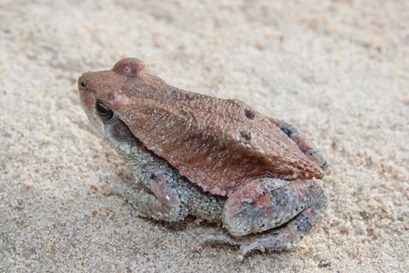
Pitfall traps yielded more of juvenile S. carens. The second array produced our first Kassina senegalensis (Senegal Running Frog) and Hemisus marmoratus (Marbled Piglet Frog). The third array produced Tomopterna marmorata (Marbled Sand Frog). This species had been sighted hopping in the grasses in numbers, all at different stages of development.
Active Searching
At an isolated rock outcrop in the grasses we sighted a plated lizard and different species of skinks, basking in the morning sun. These quickly scurried into crevices for their protection. A Lygodactylus capensis (Dwarf Gecko) was sighted at the edge of the rock outcrop sitting on a dead branch of the few trees .
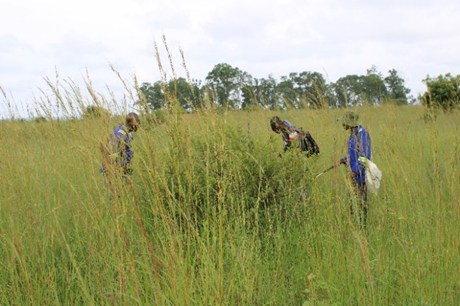
On one rainy morning we delayed our going out to check pitfall traps. Once the rains ease we finally went out only to find that the buckets were full of water, anything that had fallen in during the night having been flooded out. The rain stopped that afternoon allowing us to venture out, although the weather was still cloudy and overcast. At the end of the day the student Warren Jubane would take measurements and check for external parasites on lizards for his BSc (Hons) dissertation. This he would do before the preservation process of the specimen.
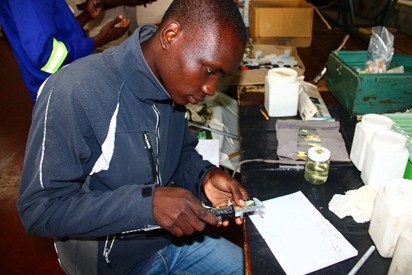
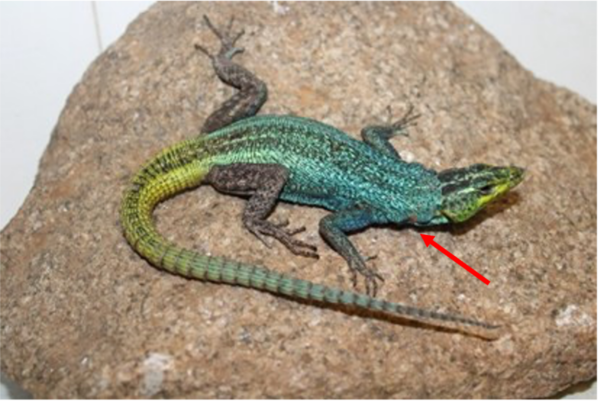
Night Hunting
A night hunt produced our first amphibians. The frogs were calling, especially the late breeders and the calls are different for different genera and species. Males either have a single vocal sac or double. Tadpoles at different stages of development were also collected from shallow pools of water within the grasses. Night hunts also produced the following amphibians more S. carens (Red toads), and a small species of frog P. mababiensis , Pyxicephalus adspersus (Giant Bull Frog), Hildebrantia ornata (Common Ornate Frog) , H. marmoratus and K. senegalensis, these frogs where still breeding.
Jabulani Grasslands

We moved on next to Jabulani, where weather was cloudy with occasional light rain. We set up 3 sights of pitfall traps in straight lines of 4 buckets each array with 9 metre long drift fences. On our first day we sighted plated lizards, an agama and a skink which at first disturbance dashed back into rock crevices. Night hunting produced H. marmoratus , S. carens, and H. ornata. Checked pitfall traps first thing in the morning, found the following amphibians had been trapped; P. mababiensis, K. senegalensis and S. carens. While having active searching we sighted skinks Trachylepis margaritifera (Rainbow skink), Trachylepis. damarana (Variable Skink); Platysaurus intermedius rhodesianus (Flat Rock Lizard). More amphibians were caught in the grasses. Carrying on in the grasses an isolated rock outcrop produced T. damarana, tadpoles in standing water on the rocks and on the edges on the rock P. mababiensis. Walking along a road we encountered a hatchling Kinixys spekii on the road. A rockoutcrop close to Sena river flowing through the grasslands we sighted a water monitor Varanus niloticus (Water monitor) in a crevice close to the water edge. T. margaritifera were also sighted and collected. Some of the lizards scurried off into rock crevices as we approached. This makes it difficult to collect them as they get deep into rock crevices. In the coming days more amphibians were caught and a rhombic night adder was caught in the grass in the afternoon. Xenopus laevis (Platannas) were collected close to camp for the first time on this trip.
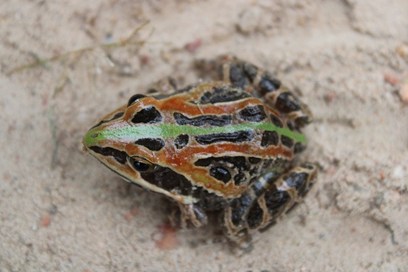
Night Hunting
As we did our night hunt in some shallow pools of water in the grasses we could hear some reed frogs calling of which we managed to collect a few for the museum collections. While catching the reed frogs we flashed a sleeping Gerrhosaurus nigrolineatus (Black lined Plated Lizard). This was our only specimen of this species found on the trip. In searching grasses we sighted more S. carens at different stages of development showing that breeding is continues throughout the rainy season. Night hunting also produced many other amphibian species and some tadpoles in standing water in the grasses.
Additional Biodiversity records
Various photographs taken in the field to record the biodiversity not just of the spiders, herps and plants but various other vertebrate and invertebrate groups that can be accessed on iNaturalist https://www.inaturalist.org/projects/somabhula-grasslands-jrs-project-25-26
Education at Local Schools
At Jabulani both the Arachnids and Herpetology teams visited a local school to talk about the two disciplines to primary school children at Pezulu Primary School. They also handed over reptile pamphlets and arachnids fact sheets.
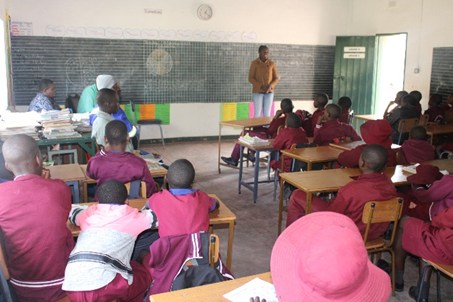
To read more about the Somabhula Grassland Biodiversity Surveys and Capacity-building for Mozambique and Zimbabwe project here.


